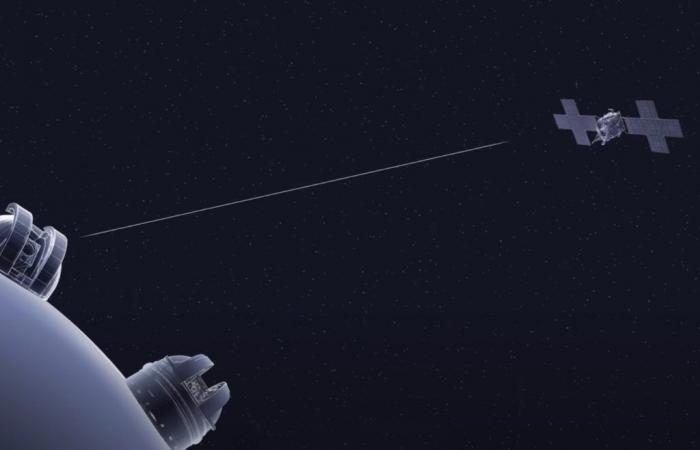NASA reached a milestone this summer in optical communications with deep space by sending a laser signal to its Psyche spacecraft, currently en route to a metallic asteroid between Mars and Jupiter. At a record distance of 290 million kilometers, equivalent to the maximum distance between Earth and Mars, this transmission made it possible to test the capabilities of the optical communication system in real conditions.
Breakthrough in space communication
« This step is significant. Laser communication requires high precision, and before launching with Psyche, we did not know how much performance would be degraded at such distances. said Meera Srinivasan, project operations manager at NASA's Jet Propulsion Laboratory (JPL) in California. The experiment thus made it possible to validate the capacity of tracking and pointing techniques for optical communication, confirming its potential for the future exploration of our solar system.
For these transmissions, NASA uses a laser transceiver on board the Psyche spacecraft and two ground stations. The Palomar Observatory in California, equipped with a 5-meter diameter telescope, receives the signals sent from space, while the JPL Optical Communications Laboratory transmits the data from Earth with a laser power of 7 kilowatts.
Optical communication is characterized by a data transfer speed up to one hundred times faster than that of current radio systems. Lasers, by using a higher frequency, allow more data to be transmitted in a single beam. When it was about 53 million kilometers from Earth — the minimum distance from Mars — the system reached an impressive speed of 267 Mb/s, comparable to high-speed internet connections on Earth. Even at more than 240 million kilometers, the throughput remained at 6.25 Mb/s, a feat never before achieved with radio communication systems in similar conditions.
Subscribe to Journal du Geek
Beyond performance, this demonstration opens up new possibilities for future manned exploration missions to Mars and beyond, by enabling the transmission of complex scientific data and high definition videos. A 45-second ultra-high definition video was transmitted by laser from space, featuring images of Earth, space and even a video of a cat (named Taters). These contents, previously stored in Psyche's memory, illustrated the system's ability to send large files at unprecedented speed.
The goal of this NASA mission, in partnership with institutions like MIT and Caltech, is to demonstrate the viability of a reliable and rapid communications system for space missions. Tests carried out so far have already transferred almost 11 terabytes of data during the first phase of operation.
???? To not miss any news on the Journal du Geek, subscribe on Google News. And if you love us, we have a newsletter every morning.






